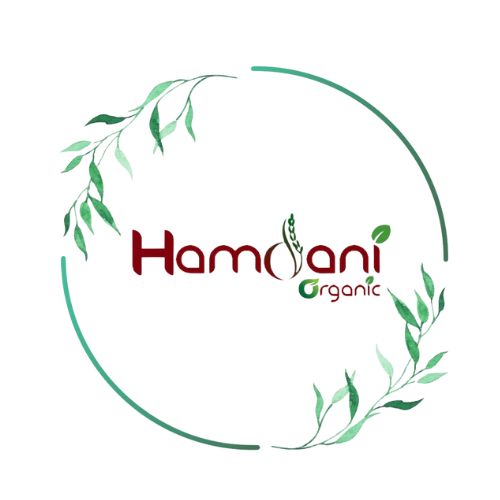Blog
The Science Behind Herbal Remedies
For centuries, herbal remedies have been used across cultures to support health and well-being. With the rise of modern medicine, many have questioned the efficacy of natural treatments. However, science is increasingly confirming what traditional healers have known for generations—herbs contain powerful compounds that support the body’s natural healing processes. In this article, we’ll explore how herbal remedies work, the science behind their benefits, and how they compare to modern pharmaceuticals.
A Brief History of Herbal Medicine
Herbal medicine has been practiced for thousands of years, dating back to ancient civilizations such as the Egyptians, Chinese, Greeks, and Ayurvedic practitioners of India. In many cultures, plants were the primary source of medicine, and their use was based on careful observation, experience, and oral traditions passed down through generations.
- Traditional Chinese Medicine (TCM): Focuses on balancing Qi (life energy) and uses herbs like ginseng, ginger, and licorice for their therapeutic effects.
- Ayurveda: An Indian system of medicine that emphasizes holistic healing, often using herbs like ashwagandha, turmeric, and neem.
- Native American Remedies: Many indigenous tribes used plants like echinacea, sage, and willow bark to treat ailments.
- European Herbalism: Many of today’s pharmaceutical drugs originated from herbs used in ancient European medicine, such as foxglove (from which the heart medicine digitalis is derived).
How Herbal Ingredients Work in the Body
Herbal remedies work by leveraging bioactive compounds found in plants. These compounds interact with the body’s systems in a variety of ways:
- Alkaloids: These naturally occurring compounds can have strong physiological effects. For example, caffeine (found in coffee and green tea) is a stimulant, while morphine (derived from the poppy plant) is a powerful pain reliever.
- Flavonoids: Found in fruits, vegetables, and herbs, flavonoids have antioxidant and anti-inflammatory properties that help protect cells from damage.
- Tannins: Common in tea, oak bark, and certain herbs, tannins have astringent and antimicrobial properties, making them useful for wound healing.
- Essential Oils: Herbs like lavender, peppermint, and eucalyptus contain essential oils that can provide calming, digestive, and respiratory benefits.
- Glycosides: Some herbs contain glycosides, which can influence heart rate and circulation. For example, foxglove-derived glycosides are used in heart medications.
Scientific Evidence Supporting Herbal Remedies
Many herbs have been studied extensively, and scientific research supports their effectiveness. Here are a few well-documented examples:
- Turmeric (Curcuma longa): Contains curcumin, a compound known for its powerful anti-inflammatory and antioxidant properties. Studies suggest it may help with arthritis, depression, and even certain cancers.
- Ashwagandha (Withania somnifera): An adaptogenic herb that helps the body manage stress. Research indicates it can lower cortisol levels, reduce anxiety, and improve cognitive function.
- Echinacea: Used to boost the immune system, research suggests echinacea may reduce the duration of colds and improve immune response.
- Ginger: Known for its digestive benefits, ginger has been shown to reduce nausea, support heart health, and have anti-inflammatory properties.
- Ginseng: Often used for energy and mental clarity, ginseng has been studied for its effects on cognitive function and fatigue reduction.
Herbs vs. Modern Pharmaceuticals: A Comparison
While herbal medicine has been used effectively for centuries, modern pharmaceuticals have changed the way we treat diseases. However, there are key differences between the two:
| Feature | Herbal Remedies | Modern Pharmaceuticals |
|---|---|---|
| Source | Naturally derived from plants | Often synthetically produced |
| Mode of Action | Works holistically with body systems | Targets specific pathways |
| Side Effects | Generally mild, but varies | Often significant, requiring monitoring |
| Regulation | Less standardized | Strictly regulated by authorities |
| Accessibility | Available over-the-counter | Requires prescriptions for many drugs |
While pharmaceuticals can be essential for acute conditions, many people turn to herbal remedies for preventative care and minor ailments due to their gentler effects and fewer side effects.
How to Safely Use Herbal Remedies
Despite their natural origins, herbal remedies should be used responsibly. Here are some key safety tips:
- Consult with a healthcare provider, especially if you have pre-existing conditions or take medications. Some herbs can interact with pharmaceuticals.
- Use high-quality, third-party-tested herbal products. Many supplements on the market vary in potency and purity.
- Follow recommended dosages. Just because something is natural doesn’t mean more is better.
- Be patient. Herbal remedies often take longer to show results compared to pharmaceuticals.
Conclusion
Herbal medicine is an ancient practice supported by modern science. While it may not replace pharmaceuticals in all cases, it provides a valuable alternative or complementary approach to health and wellness. By understanding how herbal ingredients work in the body and making informed choices, you can harness the power of nature to support your well-being. Whether you’re using turmeric for inflammation, ashwagandha for stress, or echinacea for immunity, herbs offer a time-tested path to natural healing.
Would you like to incorporate herbal remedies into your routine? Start by researching high-quality sources and consulting with professionals to find the best options for your health needs.

